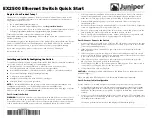
5
1. GENERAL
1-1 Overview of IEEE 802.11
The IEEE 802.11 specification is a standard for wireless connectivity for fixed,
portable, and moving stations within a local area.
The IEEE 802.11 standard describes the services required by a compliant device to
operate within an “ad hoc” or “infrastructure” network, as well as dealing with
the issues related to mobility within those networks. Spread spectrum techniques
are used to tolerate mobility and multipath effects. They are also a requirement for
compliance with FCC, ETSI and those of other regulatory authorities when
operating within the Industrial, Scientific, and Medical (ISM) frequency band.
An ad hoc communications network is created quickly and informally for a
temporary time period. An infrastructure network usually requires more planning
so that wireless stations can communicate over longer distances through access
points, and may also communicate with existing wired LANs using portals.
The IEEE 802.11 standard describes Media Access Control (MAC) procedures.
The principal method of communication is the Carrier Sense Multiple Access with
Collision Avoidance (CSMA-CA) protocol. Using this protocol, each station senses
the communications medium ( RF channel), and does not transmit until the channel
is clear. This avoids collisions and minimizes the re -transmission of subsequent
packets.
The standard also supports the operation of a station within a wireless LAN that
may coexist with several overl apping wireless LANs. To accomplish this, a scheme
of channelization and spread spectrum techniques is used. Direct Sequence (DSSS)
and Frequency Hopping (FHSS) spread spectrum techniques are supported by the
standard and both operate in the 2.4 to 2.4835GHz frequency band (the unlicensed
ISM band). An infrared technique is also supported for indoor applications. The
standard supports a 1 and 2Mbps data rate for both DSSS and FHSS and has
recently introduced a high data rate standard supporting 5.5 and 11Mbps DSSS
using Complementary Code Keying (CCK) modulation.
The standard has also specified the requirements and services that enable private
and secure communications to occur.
Содержание GWL-2400P
Страница 1: ...GWL 2400P WIRELESS LANCARD GENOTECH CO LTD...

































